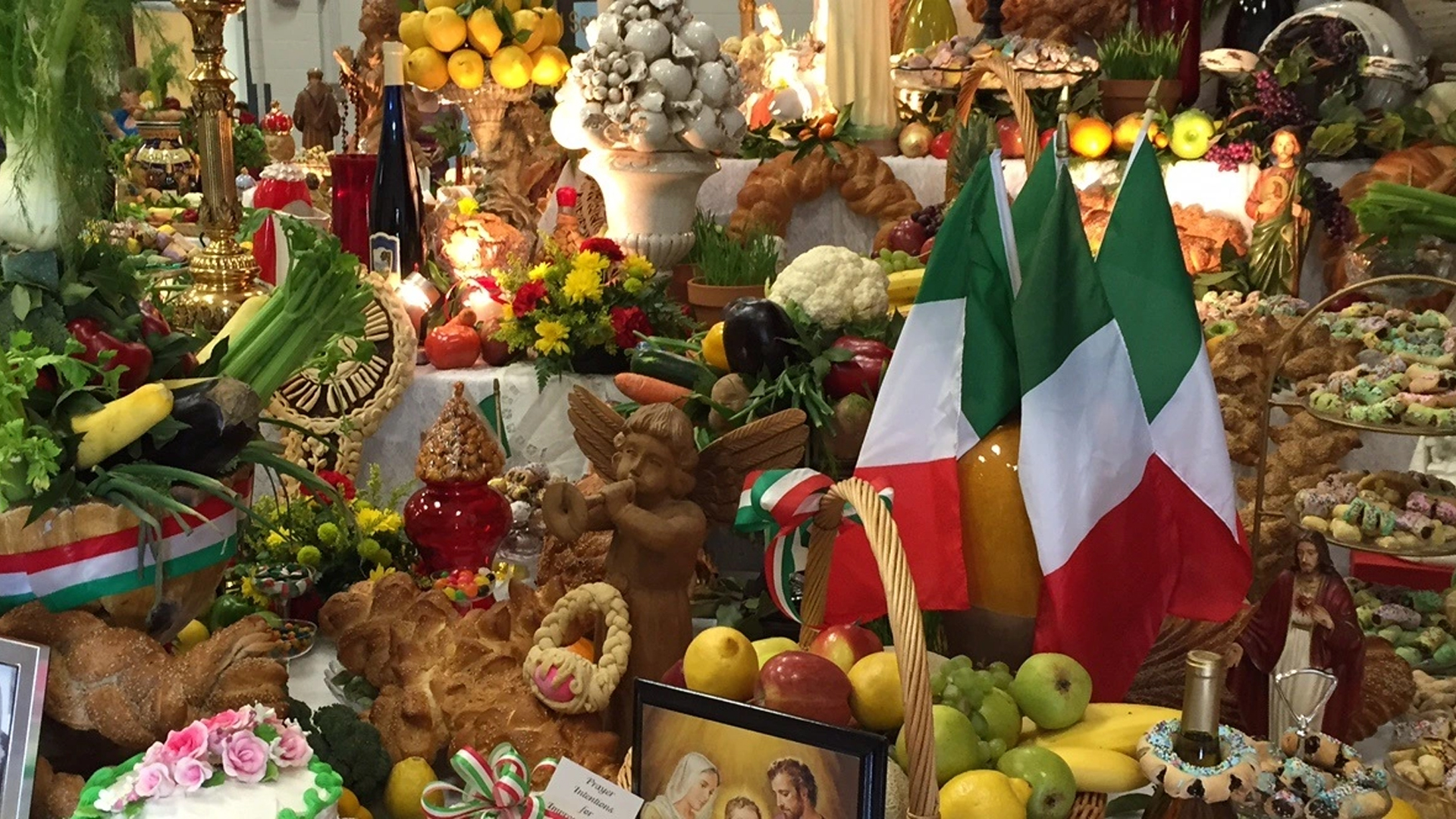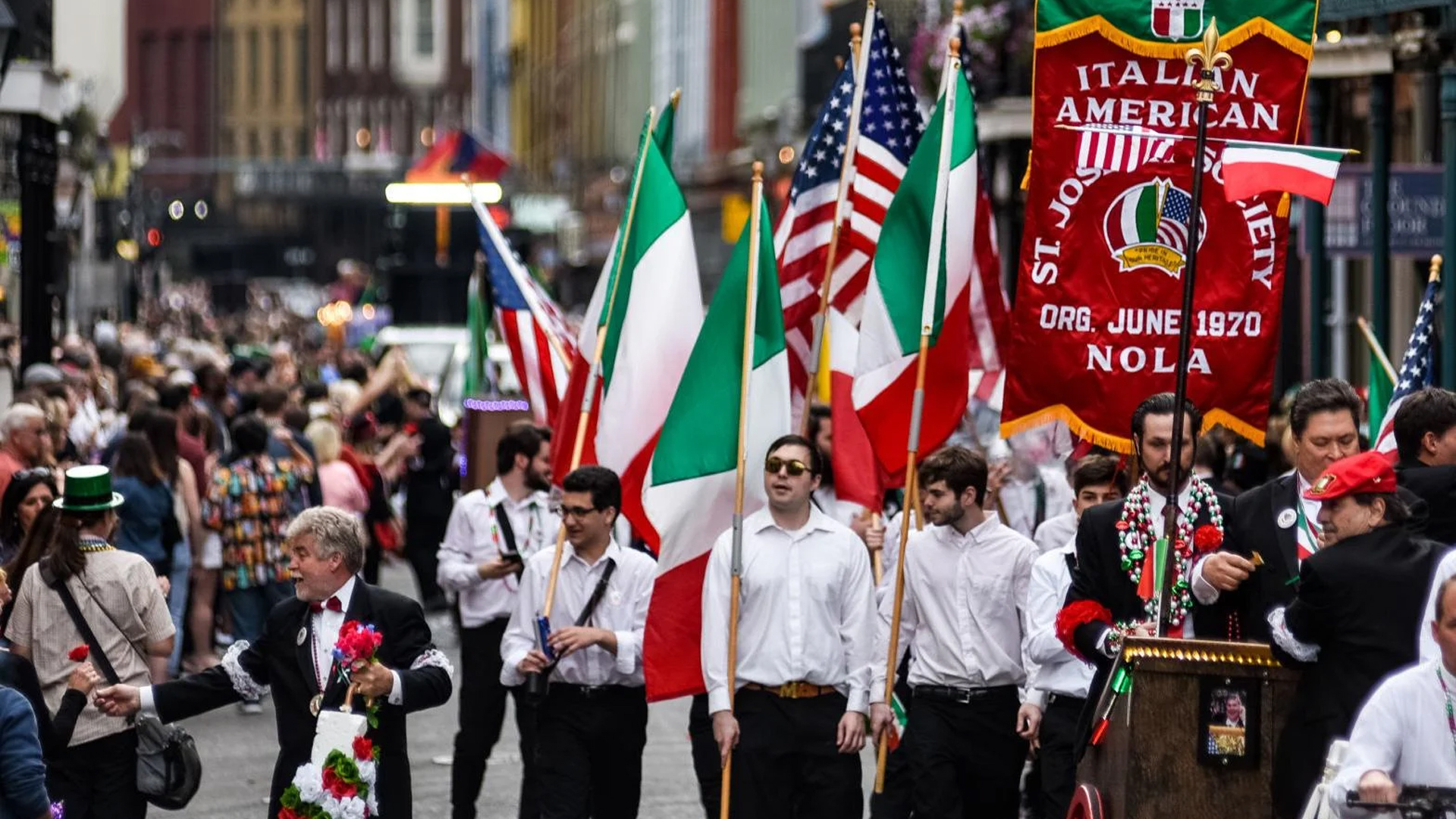St. Joseph, the Biblical carpenter who Christians refer to as Jesus Christs’ earthly foster father, is celebrated annually on March 19. He is particularly venerated by Sicilians who honor him with lavish displays of food each St. Joseph’s Day, both in Italy and the United States.
Legend has it that a great famine swept through the island of Sicily during the Middle Ages. The rains ceased, crops withered, and peasants starved. Distraught citizens prayed to Saint Joseph, promising that if he intervened, they would set aside parts of their harvest, in perpetuity, to honor him. According to Atlas Obscura, the rains returned, the fava beans harvest flourished, and culinary altars to the saint, heaped with bread, pastries, and of course the lucky fava beans, have been erected annually ever since.

(Photo Credit: wgno.com)
This tradition persists in Italian enclaves in the United States, carried over with the wave of Sicilian immigrants to the country during the 18th and 19th centuries. St. Joseph’s Day is particularly celebrated in earnest in New Orleans. While the city may be most prominently associated with Creole culture and Mardi Gras, the Italian festival is nonetheless a stand out. According to Atlas Obscura, some 40,000 Sicilian immigrants entered the United States through New Orleans. Many of these immigrants settled into the Lower French Quarter, establishing what was known at the time as Little Palermo. By 2000, there were 250,000 people of Italian descent living in the area, according to Atlas Obscura.
Every March 19 in New Orleans’ French Quarter, the Sicilian-American population holds a parade with floats, music, and marchers dressed in black tuxedos who carry and hand out fava beans. The beans are considered to be a food of good fortune as they are the gift that St. Joseph bestowed upon Sicily’s starving population after the famine.

(Photo Credit: atlasobscura.com)
Families and local community groups also erect ornate altars to Saint Joseph that are filled with candles, flowers, figurines, and symbolic foods. Traditional altars are constructed in the shape of the cross and have three levels that represent the Holy Trinity. According to a list from the Archdiocese of New Orleans, there will be more than 30 St. Joseph altars publicly available for viewings in schools, community groups, and church parishes around New Orleans this year.
As St. Joseph’s Day revolves around the saint blessing a starving population, food plays a central role in the decoration of altars. There’s the traditional pasta con le sarde, bucatini pasta topped with fresh sardines, fennel, pine nuts, raisins and breadcrumbs, which symbolize sawdust, a tribute to St. Joseph’s woodworking profession, according to NPR. There are ornate bread sculptures, twisted in shapes resembling crosses, wreaths, and carpenter’s tools, cream-filled zeppole, citrus fruits like oranges and lemons, and glazed, fig-filled cuccidati cookies, reminiscent of the fig trees found on the island. At times, there may be a platter with a large fish, meant to represent Jesus Christ, sprinkled with 12 shrimp, which are supposedly representative of his Apostles, according to NPR.
Asia London Palomba
Asia London Palomba is a trilingual freelance journalist from Rome, Italy. In the past, her work on culture, travel, and history has been published in The Boston Globe, Atlas Obscura, The Christian Science Monitor, and Grub Street, New York Magazine's food section. In her free time, Asia enjoys traveling home to Italy to spend time with family and friends, drinking Hugo Spritzes, and making her nonna's homemade cavatelli.

